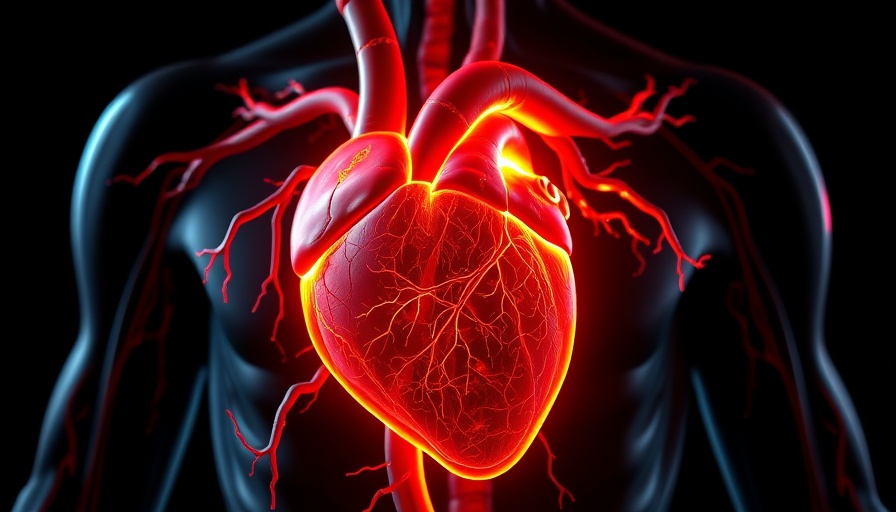
The Connection Between Vitamin D and Fatty Liver Disease
Vitamin D deficiency is rapidly becoming one of the leading health challenges worldwide, with links increasingly established between this nutrient and nonalcoholic fatty liver disease (NAFLD). This condition, far from being restricted to those who are overweight or unhealthy, is silently affecting millions of individuals, many of whom remain unaware until significant liver damage has occurred. The implications of vitamin D on liver health are profound, suggesting an urgent need for awareness and action.
Hiding in Plain Sight: NAFLD's Awakening
Nonalcoholic fatty liver disease represents a significant metabolic disorder that has escalated dramatically in recent years. The culture of indoor living, coupled with a lack of sun exposure, is severely lowering vitamin D levels in the population. As these levels decline, the liver itself struggles to manage fat metabolism effectively, which can escalate into more severe health issues.
How Vitamin D Influences Liver Function
Recent scientific discoveries illuminate vitamin D’s crucial role in liver health. Studies have revealed that vitamin D can regulate liver function at a genetic level. It acts as a switch that activates fat-burning genes while suppressing those responsible for fat storage. This is particularly relevant for aging populations, where the body’s ability to produce vitamin D naturally decreases. It turns out that ensuring adequate vitamin D levels can be instrumental in preventing the onset of liver-related disorders.
Research Insights: The Evidence is Clear
Research published in the journal Experimental & Molecular Medicine demonstrates that mice with vitamin D deficiencies exhibited significantly higher levels of fat accumulation in their livers. In a controlled experiment, older mice receiving high doses of vitamin D3 showed remarkable improvements in liver fat content and overall liver health. Specifically, the study found that:
- Fat Accumulation : Older mice with low vitamin D levels had greater fat accumulation compared to their counterparts who received vitamin D supplementation.
- Gene Activation: Supplementing vitamin D effectively turned on key genes that help break down fat—a crucial function for maintaining liver health.
Taking Practical Steps Towards Better Liver Health
To combat the rising prevalence of NAFLD linked to vitamin D deficiency, individuals can adopt several proactive strategies:
- Dietary Adjustments: Eliminate vegetable oils high in linoleic acid, which may contribute to liver fat accumulation.
- Sunlight Exposure: Safely increase your sun exposure to enhance natural vitamin D synthesis. Aim for about 30 minutes of midday sun several times a week, depending on your local climate.
- Proper Supplementation: Consult your healthcare provider about vitamin D testing and potential supplementation, targeting levels of 60 to 80 ng/mL.
- Combine Supplements: When supplementing with vitamin D3, consider pairing it with magnesium and vitamin K2 for enhanced absorption and efficacy.
Community Awareness: Addressing a Health Crisis
As discussions about NAFLD and its implications for health gain traction, local health groups in Massachusetts and beyond are focusing on educational campaigns to raise awareness about vitamin D’s role in liver health. Community events can serve as a platform for information sharing, where individuals learn more about the significance of proper nutrition and supplementation.
Future Encouragement: Potential for Personal Change
Understanding the role of vitamin D in liver health should serve as motivation for individuals to take control of their well-being. Preventing nonalcoholic fatty liver disease is within reach through informed lifestyle choices, nutritional awareness, and community engagement. If you suspect that you might be at risk for vitamin D deficiency or related liver issues, consider this a crucial call to action—for yourself and your loved ones.
In conclusion, seeking out knowledge about vitamin D and taking tangible steps to improve your nutritional intake can transform your health. From dietary changes to meaningful conversations with healthcare providers, the first steps toward combating NAFLD begin today. Don't leave your liver health to chance; act now as knowledge is your most effective ally in preventing disease.
 Add Row
Add Row  Add
Add 




Write A Comment